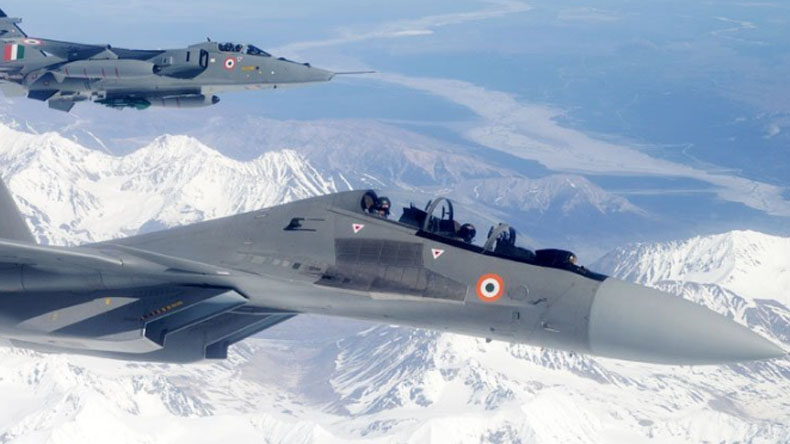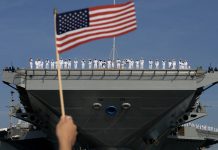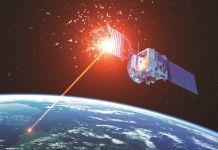A full-scale or limited war between India and China, despite several rounds of intense negotiations, cannot be ruled out yet. Experts have consistently compared the Indian Army against the Chinese PLA troops.
India-China War: US Study Explains Why Indian Air Force Could Outgun China In A Border Conflict
EurAsian Times gets you a comprehensive analysis from Belfer Center for Science and International Affairs which make a comparison between Indian and Chinese troops.
The Indian Army divides its ground and air strike forces facing China into Northern, Central and Eastern Commands. The Air Force is organized into Western, Central and Eastern Air Commands. The total available Army strike forces near China’s border areas are assessed to be around 225,000 personnel according to BCSIA reports.
This incorporates the roughly 3,000 personnel attached to a T-72 tank brigade stationed in Ladakh and the estimated 1,000 personnel attached to a Brahmos cruise missile regiment in Arunachal Pradesh. For the Army, this total near China’s border areas is divided into about 34,000 troops in the Northern Command; 15,500 troops in the Central Command; and 175,500 troops in the Eastern Command.
In comparison, the Belfer Center for Science and International Affairs (BCSIA) estimates a total of 200,00-230,000 Chinese ground forces are under the Western Theater Command, and Tibet and Xinjiang Military Districts.
India Bets Big On Nikki Haley To Emerge As Vice Presidential Candidate Under Trump
However, this apparent numerical near-equivalence with that of Indian regional ground forces is misleading. Even in a war with India, a significant proportion of these forces will be unavailable, reserved either protecting the Russian border or for countering rebellion in Xinjiang and Tibet, says the report.
The majority of the PLA troops are located far away from the Indian border, posing a striking contrast with the majority of forward-deployed Indian forces with a single China defence mission.
The new joint Western Theater Command of China is estimated to hold around 90,000-120,000 troops, principally divided into the 76th and 77th Group Armies. Because of ongoing unrest in Tibet and Xinjiang, the Western Theater Command’s ground operational authority does not extend to these regions.
Instead, a special PLA Army-directed Military District (MD) has been created for each of these regions. In Tibet, the region closest to Indian border areas, the PLA presence is judged to number just 40,000 troops. The highest concentration of PLA forces are located in the Xinjiang region, totalling around 70,000.
India-China War: US Study Explains Why Indian Air Force Could Outgun China In A Border Conflict
This means that China is regularly operating with a permanent Indian conventional force advantage along with its border areas. In the event of a major standoff or conflict with India, it would have to rely upon mobilization primarily from Xinjiang and secondarily from the Western Theater Command forces deeper in China’s interior. By contrast, Indian forces are already in position.
Indian Air Force vs People’s Liberation Army Air Force
The research by the Belfer Center for Science and International Affairs also compares the IAF and the PLAAF. Aerial combat is likely to decide the fate in case of a potential war between India and China since much of the battlefront is located high in the Himalayas, an area with limited ground accessibility.

IAF has an estimated 270 fighters and 68 ground attack aircraft across its three China-facing commands. It is also expanding its network of Advanced Landing Grounds (ALGs), which constitute small air bases in forward locations to provide staging grounds and logistics hubs for aircraft strike missions.
In the Western Air Command, the IAF possesses around 75 fighters and 34 ground attack aircraft, besides 5 ALGs close to Chinese Tibetan areas. The Central Air Command features around 94 fighters, 34 ground attack aircraft, and one ALG.
The Eastern Air Command hosts around 101 fighters and 9 ALGs. Most importantly, the Indian Army and the IAF are stationed very close to China’s border, thus shortening their mobilization time and limiting the prospects of a successful Chinese cross-border advance.
The Chinese PLAAF, on the other hand, suffers from a numerical disparity to the IAF in the border region. Unlike the tripartite organizational division of Chinese ground forces facing India, the Western Theater Command has assumed control of all regional strike aircraft. In total, this amounts to around 157 fighters and a varied drone armoury.
This includes an estimated 20 GJ-1/WD-1K precision strike UAVs, 12 WD-1 ground attack and reconnaissance UAVs, 12 WD-1 precision strike UAVs, and 8 EA-03 reconnaissance and electronic warfare UAVs.
A proportion of these are reserved for Russia-centric missions. By comparison, as noted earlier, the Indian Eastern Air Command can field around 101 fighters against China alone. China also uses eight airbases and airfields relevant to India strike missions, although a majority are civilian airports that can be commandeered in wartime.
Other comparative weaknesses permeate the PLAAF’s posture against India. On a strict comparison of available 4th generation fighters, authoritative assessments hold that China’s J-10 fighter is technically comparable to India’s Mirage-2000 and that the Indian Su-30MKI is superior to all theatre Chinese fighters, including the additional J-11 and Su-27 models.
China hosts a total of around 101 4th-generation fighters in the theatre, of which a proportion must be retained for Russian defence, while India has around 122 of its comparable models, solely directed at China.
The high altitude of Chinese air bases in Tibet and Xinjiang, plus the generally difficult geographic and weather conditions of the region, means that Chinese fighters are limited to carrying around half their design payload and fuel. In-flight refuelling would be required for PLAAF forces to maximize their strike capacity.
China had only inducted 15 such tanker aircraft nationally as of 2017, meaning only a handful of its forces will benefit from this solution. Against these underpowered fighters, IAF forces will launch from bases and airfields unaffected by these geographic conditions, with maximum payload and fuel capabilities.
The most significant PLAAF forward air bases and airfields near Indian border areas are located at Hotan, Lhasa/Gonggar, Ngari-Gunsa, and Xigaze and are vulnerable to a dedicated Indian offensive.
Ngari-Gunsa and Xigaze reportedly have no hardened shelters or blast pens for their aircraft, which sit in the open. Lhasa/Gonggar has recently developed hardened shelters able to protect up to 36 aircraft, while Hotan reportedly hosts “two aircraft shelters” of unknown capacity.
An Indian early initiative to incapacitate these four bases—and achieve air superiority over them—would compel China to rely more upon aircraft from its rear-area bases, exacerbating its limited fuel and payload problems.
Moreover, China lacks the redundancy and related force survivability compared to India in their comparative numbers of regional airbases. In sum, India has a stronger regional air position, with “a large number of airfields in the east and west, so even if some airfields are down, operations can continue from other locations.
PLAAF training and experience shortcomings that are not shared by the IAF amplify China’s air disadvantage. Recent PLAAF exercises with unscripted scenarios have found that pilots are excessively reliant upon ground control for tactical direction.
In unanticipated combat scenarios, this dependence on explicit control tower guidance becomes extreme, while “ground commands” are simultaneously often unable “to keep up with the complex and changeable air situation. This suggests that PLAAF combat proficiency may be significantly weaker than often estimated.
Via: Belfer Center for Science and International Affairs
Frank O’Donnell, Alexander K. Bollfrass
March 2020 Report




